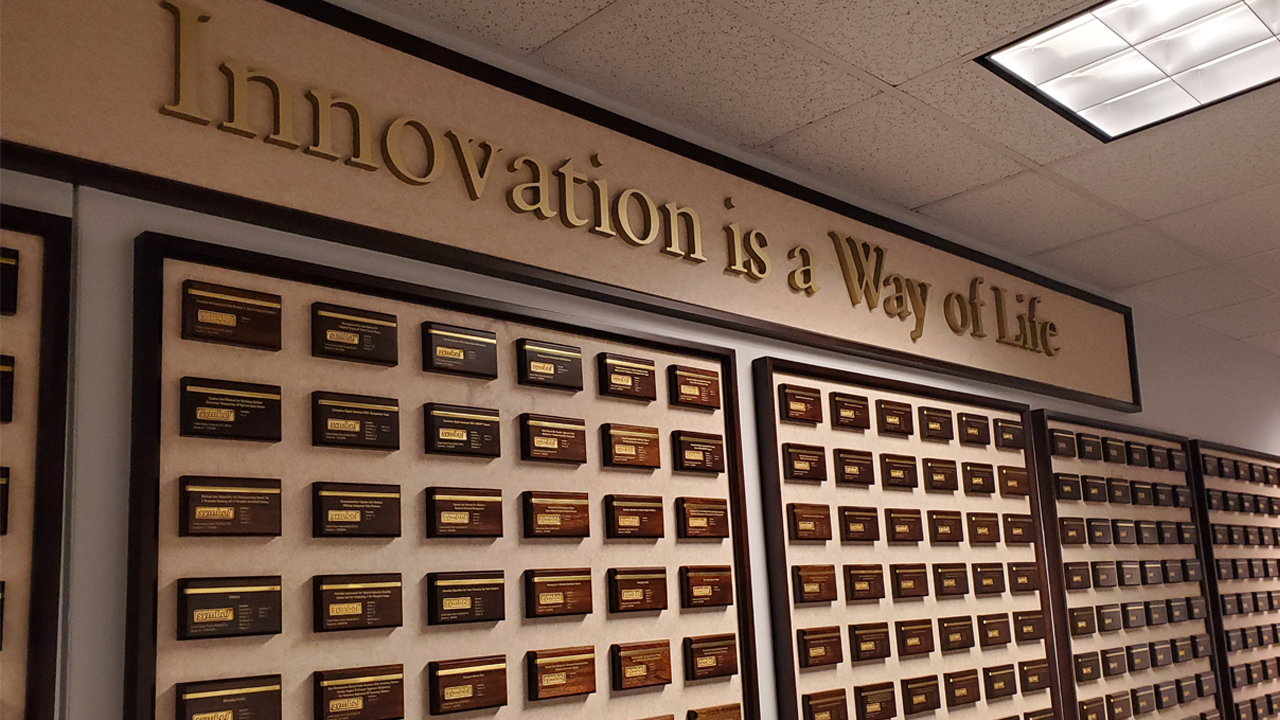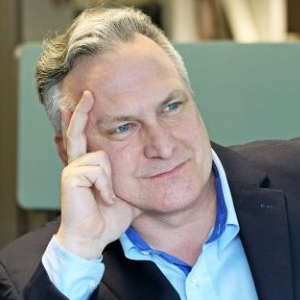
The Incredulous Inventor
Life’s most rewarding moments come unexpectedly. What was once thought impossible can suddenly become your reality.
Overnight television is rife with commercials that remind you it’s possible to turn that “one crazy idea” into great riches. Urban legend is full of them: Wite-Out; the George Foreman Grill; Post-it Notes; Flex Seal; the Zamboni.
Yet few people realize the arduous path needed to achieve such patent “success”. Countless hours of trial and error. Ridicule. Self-doubt. Failure.
Thomas Edison famously said: “I haven’t failed. I've just found 10,000 ways that won't work.” (This from a man who holds 512 patents and has arguably changed human life as we know it.)
I used to think that patents were something only science legends or crazy geniuses like Edison, Einstein, Tesla or Jobs would have. Never in my wildest dreams could I have imagined getting one myself. But, thanks to my job at Zebra Technologies, my dream of becoming a patent-holder recently came true.
“If at First You Don’t Succeed, Try, Try Again” (and Again, and Again….)
When I first joined Zebra in 2008 (through Zebra’s acquisition of my then-employer Motorola Solutions Enterprise business), I vaguely remember passing the innovation hallway in our Holtsville, New York facility. There were many small wooden plaques hanging on the wall, each representing one of the more than 4,000 patents which Zebra counts among its own.
When I first started my career with Zebra, I was working in the branding and marketing department of the mobile computing division. Occasionally I would hear of “getting” a patent or “applying” for a patent. Again, my thought was that those honors were for the engineering super-geeks, the ones doing the hard nuts-and-bolts work of building a successful technology company.
A few years later, I became a product manager, handling the rugged handheld scanner business. Again, I heard of patents – many of those working in the data capture department at Zebra hold quite a few.
Always eager to invent something, I decided to ante up and try my luck at pitching my Zebra colleagues a new technology product design worthy of patent protection.
My first foray was inspired, but rather clumsy – a head-mounted scan engine unit, similar in design to those LED lights you wear on your head while camping or spelunking. Or like the thing that River Monster fisherman guy wears during his nighttime angling.
Nonetheless, since this was my idea, surely it was as brilliant as any since Edison, I remember thinking to myself as I brashly entered into the office of one of my department’s senior engineers for my unannounced pitch. Breathlessly, I blurted out my idea to a less-than-slightly-stunned audience. “Surely, in the 50 years of Zebra’s existence, no one has thought of this one before,” I said. After delivering my homily, the senior engineer took all of two seconds to tell me that it was dumbest idea he had ever heard.
Thunderstruck, I stared at him blankly and slunk out of his office, devastated. What went wrong? What did I do? Was it my shirt? My shoes? Did I have something stuck between my teeth? Maybe, I should have made an appointment to see him. Yes, that was it. I should have approached this more formally and less impetuously.
Returning to my office cube, I agonized over my rejection. Was my idea really that dumb? Suddenly, an overwhelming sense of indignation overtook me. Who was he to tell me my idea was a stupid one? Didn’t Edison and Jobs experience moments of doubt? This wasn’t failing. That senior engineer was just too narrow-minded to understand my idea! I’ll show him. I sprang up from my chair inspired, straightened my shoulders, took a deep breath and marched right back to his office. I felt like Spartacus.
Once again inserting myself into his office, without making any introduction or extending any pleasantries of the day, I politely but firmly rapped on his door, grandly entered and said to him: “You know what? My idea isn’t stupid. As a matter of fact, I think it’s a pretty darn good idea!”
The senior engineer took one look at me, paused dramatically and said, “Who are you again?”
So, I moved on…but only for a moment in time. As Edison once said: “Our greatest weakness lies in giving up. The most certain way to succeed is always to try just one more time.”
After some more inquiry among colleagues, I finally figured out the best way to submit my groundbreaking idea was through the Zebra patent submission system. Surely one sentence or two was more than enough for the open-minded members of the company’s patent review committee to immediately recognize my great genius and bestow a golden patent plaque upon my head with laurels, to great acclaim.
I followed my submission in the online patent portal tracking system like a hawk watching a field rodent. The patent review committee met regularly, so surely my idea would be on the top of the docket in their next meeting. Time passed and with no word. Additional time went by, and again no word.
Finally, I assembled enough courage to approach that same Zebra senior engineer again, knowing full well he was on the patent review committee.
Playing it smooth and a little cocky, I inquired about my patent submission, and was bluntly told: “Oh, yeah, THAT one. Well, that one was universally rejected. Prior art, you know, but keep innovating!”
What? How could this be? And what the heck was prior art?
(By the way, “prior art” is evidence that your invention is already known).
The “End of the Road” Was in Fact Just a Detour
My career with the company has changed since then, and I was fortunate to find a position in Zebra’s Chief Technology Office (CTO) in 2014. I was also very lucky to be able to share some of my newer ideas around our wearable technology with some terrific new colleagues.
On April 24, 2018, I was awarded my very first patent: U.S. Patent Number 9952432, “The Arrangement for, and Method of, calibrating a Wearable Apparatus to Electro-Optically Read Targets.”
The Tables Have Turned: Advice from “An Incredulous Inventor”
Despite the doubts that others may have had about my inventive capabilities early on in my career, my persistence and inventive spirit must have left an impression. With great fortune, I was invited to serve as a member of the Zebra CTO Patent Review Committee in 2015 which, to a marketing guy like me, is a great honor. I still hold this position today, and it is a unique privilege to work with some of the brightest minds at both Zebra and in the technology field as a whole.
My brash earlier self is reflected in some of the patent ideas that come in for review to the committee – some are ridiculously clever; others need more work. However, it always surprises me how many fantastic ideas come from employees at our company.
I am also enamored with the humility of the innovative giants that walk our halls every day, who seem to come up with several new patents every single year, like it’s no big deal. I am looking forward to sharing a celebratory meal with many of them at Zebra’s Annual Patent Award Dinner on June 10 in Lincolnshire, Illinois.
Remember: If you are thinking about submitting a patent for consideration, always remember – no idea is too dumb, no idea is too wild or crazy. If you can put it on paper and imbue it with a well thought out plan and flow – and demonstrate how your idea would work and improve Zebra’s business – then your “one crazy idea” is probably not as crazy as you think. Know that, you too, can achieve what may seem on some days to be impossible. I am proof that anything is possible.
Keep innovating.

Matt Kowalski
Matt Kowalski directs Business Operations for Zebra Technologies’ Chief Technology Office (CTO). His vast experience spans a wide array of disciplines and functions – product management, competitive intelligence, business and customer development, market research, operations, portfolio marketing, intellectual property, business strategy, product lifecycle management and voice of the customer.
Matt’s global product launches include long-range barcode scanners, mobile computers, APIs and software. He currently holds two technology patents.
Matt has a bachelor’s degree from New York University (NYU), a Professional Certification in Market Research from the University of Georgia, a Six Sigma Green Belt and an MBA from Fordham University’s Gabelli Business School at Lincoln Center in New York City.




